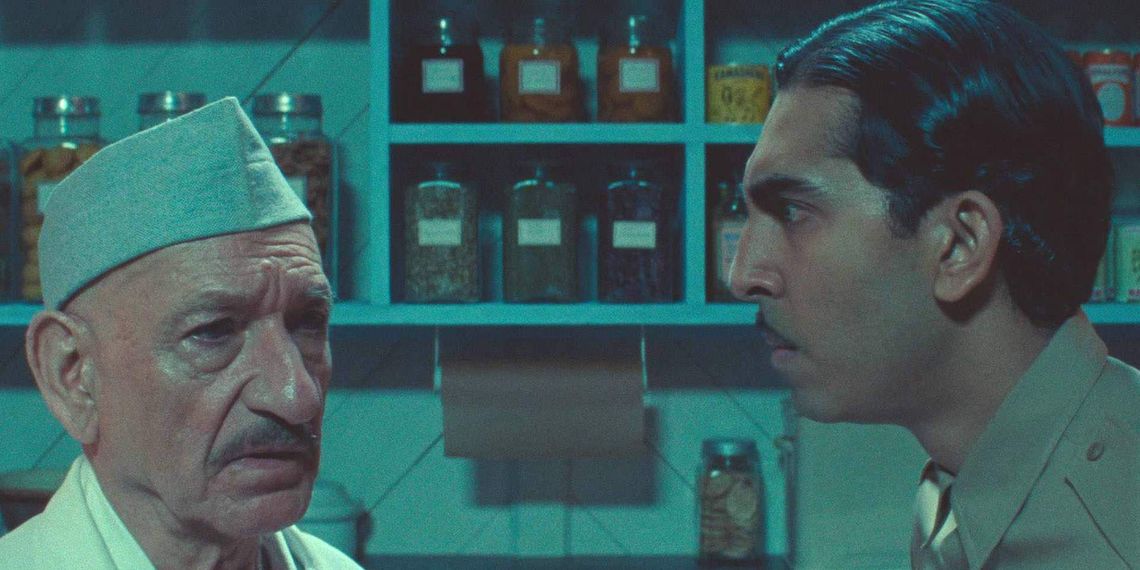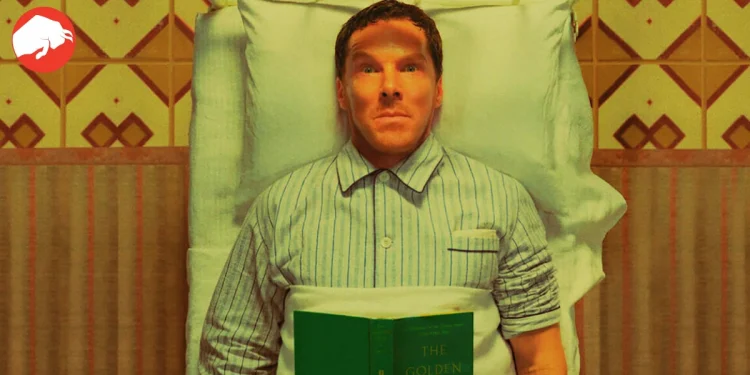The Venomous Layers of Wes Anderson’s ‘Poison’: A Profound Intersection of Reality and Symbolism
Wes Anderson’s short film ‘Poison,’ part of his Dahl adaptations for Netflix, spirals into a tense psychological thriller starring Benedict Cumberbatch, which, at its core, reverberates with both literal and metaphorical implications. Cumberbatch’s character, Harry Pope, finds himself paralyzed by the dread of a potential fatal snakebite, while also subconsciously unmasking a toxic mentality embedded within colonial dynamics.
Benedict Cumberbatch’s Paralysis: A Vivid Portrayal of Fear and Threat
Harry Pope, portrayed by Benedict Cumberbatch, lays immobilized, uttering to his friend Woods (Dev Patel) that he’s been motionless for “hours and hours” to avoid rousing the coiled krait snake on his stomach. The palpable anxiety penetrates the room as both Woods and the savior of the hour, Dr. Ganderbai (Ben Kingsley), internalize the severe peril of the situation. Notably, Harry’s visibly sweaty panic provides a piercing lens into how the film underscores the krait’s dangerous reputation.

“Krait bites kill an estimated 70-80% of untreated victims in Bangladesh, the now-independent nation where Anderson’s movie is hinted to be set thanks to the trademark jute crops on screen,” this observation, coupled with vivid cinematic portrayals, harmonizes the film’s existential dread with an in-depth understanding of real-world hazards.
Reflecting a dire scenario, the trio’s worry echoes legitimate fears, given that the krait has been identified as “responsible for more than half of all snakebite deaths” in areas like Bangladesh. Their venom-induced fatalities, characterized by excruciating stomach pains, escalating paralysis, and a potential death timeline of four to eight hours, casts a shadow that looms menacingly over the plotline.
“The common krait (B. caeruleus) is one of the ‘big four’ snake’s species and it has been responsible for one of the most human deaths and injuries from snakebites in Bangladesh and India,” a report from Toxicon: X substantiates the harrowing ordeal presented in Anderson’s ‘Poison.’
Peeling Back the Layers: Beyond The Serpentine Fear into A Profound Symbolism
Despite the literal dangers of krait snakes being impressively accurate, ‘Poison’ silently slithers beyond its initial portrayal of tangible dread and descends into an abyss of metaphorical venom, where the actual ‘poison’ is not the snake, but the bigotry veiled within Harry Pope himself. The invisible serpent symbolizes a concealed, yet potent venom: racism and an attitude of superiority which, once unleashed, imparts a poison no serum can neutralize.
The narrative demonstrates how Harry’s vitriol towards Dr. Ganderbai isn’t merely an outburst, but a mirror reflecting the unseen, yet pervasively toxic racial dynamics of colonial India, transforming the presumed threat of a venomous snake into a deeper metaphor for concealed prejudice and power dynamics.

In the climax, an apology from Woods to Ganderbai subtly, yet powerfully, acknowledges the underlying, continual threat pulsating beneath the surface of societal interactions. The tacit understanding that more ‘snakes’ linger, hidden yet omnipresent, encapsulates a reality where the venom of prejudice is perennial and perhaps, more lethal than the feared krait itself.
The Poignant Dichotomy: Fear of The Physical and The Psychological
Wes Anderson’s ‘Poison’ remarkably intersects the fear of a physical, life-threatening entity and the mental, societal poison that infiltrates the psyches and interactions of individuals immersed in a racially tense environment. This psychological thriller doesn’t merely narrate a tale of potential death by a venomous creature but meanders through the sinuous lanes of internal and external threats that manifest both physically and metaphorically.
In conclusion, ‘Poison’ becomes a conduit through which Wes Anderson not only explores, but adeptly visualizes, the insidiousness of literal and metaphorical venom, seeping through the recesses of fear and prejudice, and framing a narrative that intertwines tangible dread with the more abstract, yet equally lethal, dangers lurking within the human psyche. This intersectionality of fear, peril, and hidden venom distills a profound reflection on both individual and collective experiences of threat, toxicity, and survival amidst lurking, serpentine dangers, both seen and unseen.









